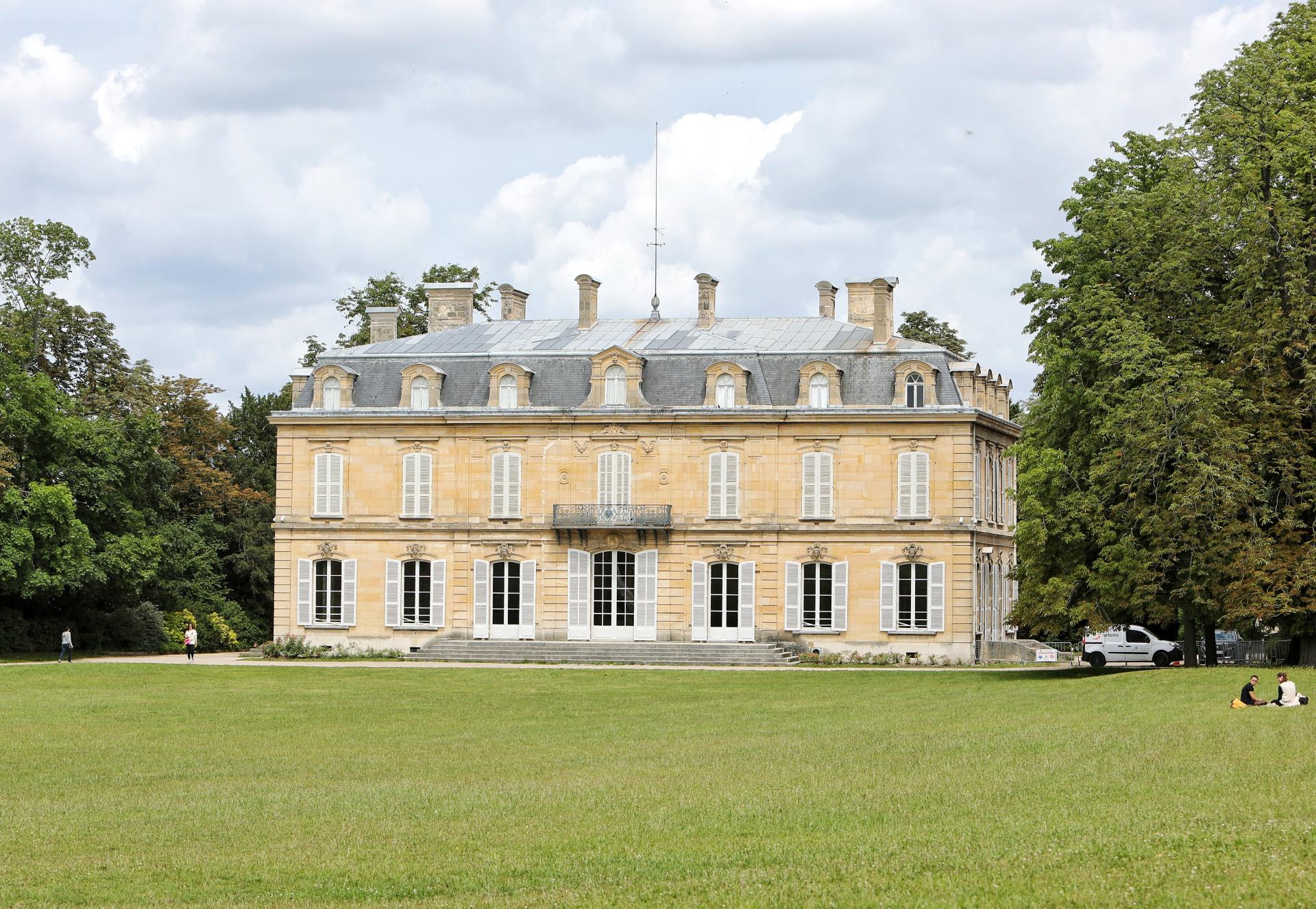Bois-Préau castle is currently closed (reopening estimated last quarter 2022).
The park of Bois-Préau is a vast English garden with curves, gentle slopes, rivers and ponds, a real green setting of 17 hectares located in the city center.
The Bois-Preau park is open every day except Tuesdays, and is accessible to all:
Opening times for the main gatehouse and the chalet on Allée Sophie:
• from 1 October to 31 March 9.30am to 6pm (early closure at 5pm on december 24th, 25th and 31th, and on january 1st).
• from 1 April to 30 April 9.30am to 7pm
• from 1 May to 30 September 9.30am to 8pm, Mondays 9.30am to 7pm
Jean le Coz gatehouse: closes 15 minutes before closing time
Charles Floquet gatehouse: closes 30 minutes before closing time
History of Bois-Préau
Originally a simple fiefdom of the extremely wealthy Abbey of St. Denis, the land of Bois-Préau was jointly purchased in 1696 by Frédéric Léonard and his son Frédéric-Pierre Léonard, both printers and ordinary booksellers to the King. On these seventeen hectares of land - which is still the size of the park today - they built a reasonably large residence between 1697 and 1700, surrounded by gardens ornamented with water features. In 1747 the son of Frédéric-Pierre handed over the land to a former kitchen hand, Jean Garnier, who had become maître d' to Queen Marie Leszczynska; Garnier embellished the estate up until 1765 with the construction of a bath-house and the addition of ornamental statues to the park. The Count of Prie, who had owned Bois-Préau for the nine years between 1765 and 1774, sold the property to the banker Louis Julien, who died there in 1796. His daughter, Anne-Marie Julien, persistently refused to sell Bois-Préau to Bonaparte, in spite of the attractive offers he made. It was not until the spinster’s accidental death by drowning in one of the park’s water features on 9 March 1808 that Joséphine was finally able to extend her estate towards the village of Rueil.
After making inquired into the heirs, the Empress was unable to resist the temptation to extend her property; Napoleon even wrote to her from Schönbrunn in September 1809: “The spinster’s house is worth a mere 120,000 francs – they shall never succeed in getting any more for it. However, it is at your entire discretion to do as you wish, since it amuses you, but if you buy it, do not have it torn down merely in order to have a few rocks set in its place.” Three weeks after the divorce, he sent her 200,000 francs with which to purchase Bois-Préau, and the conveyance was signed on 29 January 1810. By having the walls separating Malmaison from Bois-Préau demolished, it was possible to go to Rueil without setting foot outside the property. Joséphine housed several of her staff here, such as her doctor and her intendant, and made use of the space to store the overflow from the library at Malmaison (7,500 volumes), fitting out a room for the estate’s archives and storing part of her natural history collection.
The Empress' death brought a halt to the work begun by Louis-Martin Berthault on the gardens, which she had intended to remodel. Her son and heir Prince Eugène continued the upkeep of Bois-Préau, and when the latter died in 1824 his widow sold the property to Parisian traders in 1828. In 1853 the property came into the possession of Edouard Rodrigues-Henriques, benefactor of Rueil, who made Bois-Préau a gathering place for artists and musicians such as the composers Fromental Halévy, who had married his first cousin, and Georges Bizet, who had married Halévy’s daughter. He also kept up extensive correspondence with George Sand, who had been introduced to him by Alexandre Dumas. She helped him choose which books to buy for the library intended for the poor of Rueil, and his wife, Sophie Rodrigues, founded a crèche with twenty cribs. The château was not, however, in pristine condition, and Edouard Rodrigues' first concern was to demolish the wings and have the majority of the central part rebuilt in 1854 by his architect who may have been Alfred-Louis Feydeau, uncle of the famous author.
Rodrigues-Henriques died in 1878 and his children sold Bois-Préau the following year to the journalist Jouvin, responsible for the revival of the Figaro with his father-in-law Villemessaint. After passing through several sets of hands, the property was purchased in 1920 with reserve of usufruct by another couple of great benefactors of Rueil: Edward Tuck and his wife Julia Stell. They donated Bois-Préau and its seventeen-hectare park to the French national museum association Réunion des Musées Nationaux in 1926 to create an annex to Malmaison museum.
The statues of the Park
The statue of Empress Josephine
The statue, sculpted by Gabriel Vital Dubray in 1865 and entered the collections of the national museum in 1932, was deposited on May 18, 2021, with a view to its restoration. Indeed, the sculpture exhibited in the open air for more than a century and a half has suffered damage related to bad weather, air pollution, organic soiling and mineral or biological infestations. The statue of Josephine therefore had to undergo an appropriate treatment consisting of a brushing of micro-organisms, a biocide treatment and a plugging of cracks and chips. Unfortunately the removal revealed that the surface of the statue was also very worn and that the extremities were particularly fragile. Under these conditions, the continuation of the open-air exhibition proving too delicate, it was decided to make a copy in resin and marble powder now presented to the public since September 14, 2021. The original statue, a masterpiece of our heritage, will be carefully preserved in the museum's reserves so that it can be passed on to future generations.
The other statues
Three other decorative sculptures are present in the park: The eagle, The reader and The thought

